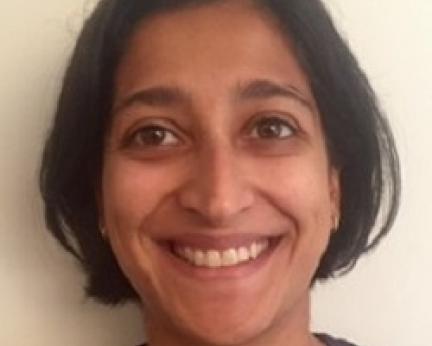I am now about half-way through my higher surgical training ST3-8 in the south west of England. Vascular surgery only became a surgical specialty in its own right in 2013 (having previously been a sub-specialty of general surgery) and I’m in the first intake of trainees.
Vascular surgery has changed immensely over the last few years. When I was at medical school there was lots of open vascular surgery, but nowadays minimally invasive endovascular techniques are commonplace. I really enjoy the complex endovascular work, although I also love open surgery too. There’s also overlap with the work of interventional radiologists.
During the first two years of vascular surgery training, ST3-4 you also participate in a general surgical on-call. From ST5 your work is solely within vascular surgery. Nationally vascular surgery is centralising to specialist centres to deliver improved patient outcomes. As a trainee we work at the hub hospitals but are involved in receiving referrals from hospitals that no longer provide vascular surgery.
At present I participate in two weekly general vascular surgery outpatients’ clinics, each lasting half a day, starting at 9.00 am and finishing between 12.30 and 1.00 pm. Patients are referred with a variety of conditions, including aneurysms, varicose veins and claudication, a condition where patients experience a cramping pain in the legs caused by arterial disease.
Not everyone who attends these outpatients’ clinics needs surgery. Sometimes they might be given lifestyle advice, put on a surveillance programme or discharged.
I also work in a renal access clinic each week, where I see patients who are having kidney dialysis. Before haemodialysis can take place, patients need to have a blood vessel created in their arm called a fistula, which is created by connecting an artery to a vein, making a larger blood vessel. In this clinic I assess patients to check that they have adequate arteries and veins before a fistula can be made.
Once a month I spend time in our joint diabetic foot clinic, with endocrinology, orthopaedic surgery and diabetic podiatry colleagues.
I usually spend between one and two full days each week in the operating theatre. Before surgery starts I see consent the patients on my list for the day and answer any questions they may have. We work as a team with junior and senior colleagues, and the consultant is always available for advice and help.
Before we start operating we have a surgical team brief where we discuss any worries or concerns for the day, and check that all equipment we need is available. The range of operations is varied and includes arterial bypass, carotid surgery, aneurysm repair, amputation or renal access work.
I also spend half a day a week in interventional radiology, working closely with colleagues from radiology to perform a range of procedures, such as angioplasty, where a small balloon is used to stretch narrowed arteries
Each week I also attend a multidisciplinary team meeting (MDT) with vascular surgery colleagues, radiologists and anaesthetists, where we discuss cases, look at images and share expertise. This meeting also includes a cross-county tele-conference, with colleagues from hospitals across the region.
Teaching is an important part of my work and I teach for the Severn school of surgery and the Royal College of Surgeons.





